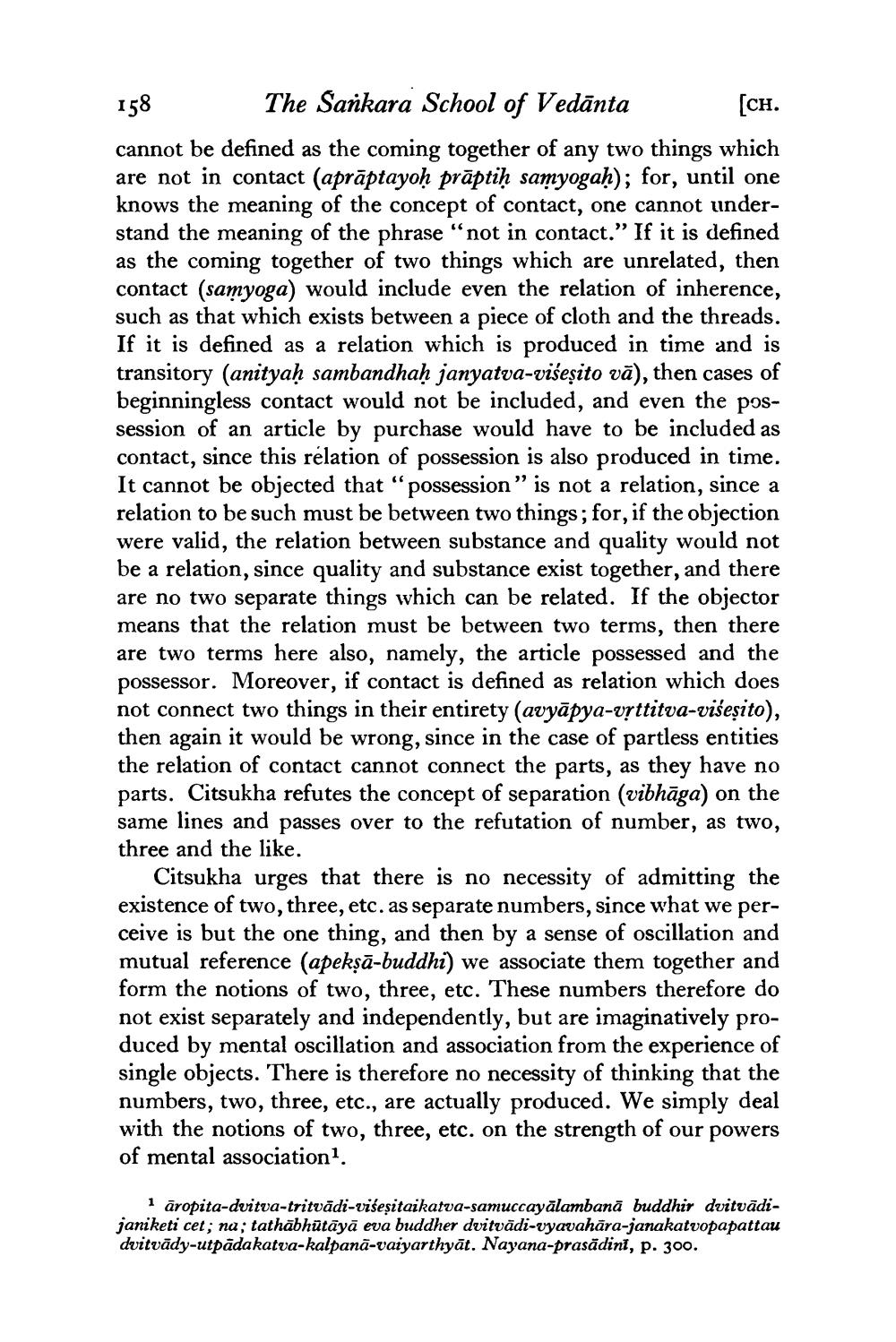________________
158
[CH.
The Sankara School of Vedānta cannot be defined as the coming together of any two things which are not in contact (aprāptayoḥ prāptiḥ samyogaḥ); for, until one knows the meaning of the concept of contact, one cannot understand the meaning of the phrase "not in contact.” If it is defined as the coming together of two things which are unrelated, then contact (samyoga) would include even the relation of inherence, such as that which exists between a piece of cloth and the threads. If it is defined as a relation which is produced in time and is transitory (anityaḥ sambandhaḥ janyatva-viseșito vā), then cases of beginningless contact would not be included, and even the possession of an article by purchase would have to be included as contact, since this relation of possession is also produced in time. It cannot be objected that "possession” is not a relation, since a relation to be such must be between two things; for, if the objection were valid, the relation between substance and quality would not be a relation, since quality and substance exist together, and there are no two separate things which can be related. If the objector means that the relation must be between two terms, then there are two terms here also, namely, the article possessed and the possessor. Moreover, if contact is defined as relation which does not connect two things in their entirety (avyāpya-vrttitva-višeşito), then again it would be wrong, since in the case of partless entities the relation of contact cannot connect the parts, as they have no parts. Citsukha refutes the concept of separation (vibhāga) on the same lines and passes over to the refutation of number, as two, three and the like.
Citsukha urges that there is no necessity of admitting the existence of two, three, etc. as separate numbers, since what we perceive is but the one thing, and then by a sense of oscillation and mutual reference (apekṣā-buddhi) we associate them together and form the notions of two, three, etc. These numbers therefore do not exist separately and independently, but are imaginatively produced by mental oscillation and association from the experience of single objects. There is therefore no necessity of thinking that the numbers, two, three, etc., are actually produced. We simply deal with the notions of two, three, etc. on the strength of our powers of mental association?.
1āropita-dvitva-tritvādi-vibesitaikatva-samuccayālambanā buddhir dvitvādijaniketi cet; na; tathābhūtāyā eva buddher dvitvādi-vyavahāra-janakatvopapattau dvitvādy-utpadakatva-kalpanā-vaiyarthyāt. Nayana-prasādini, p. 300.




